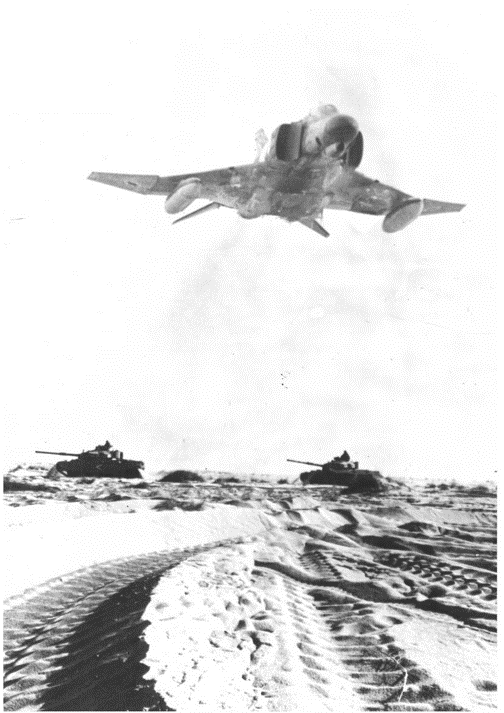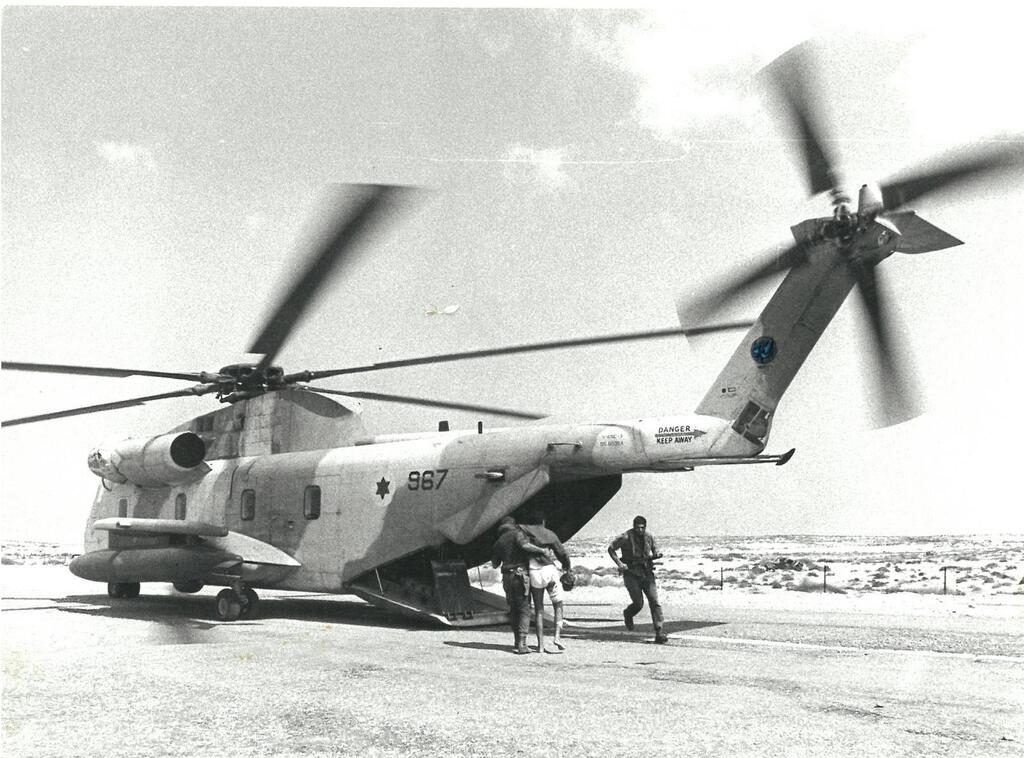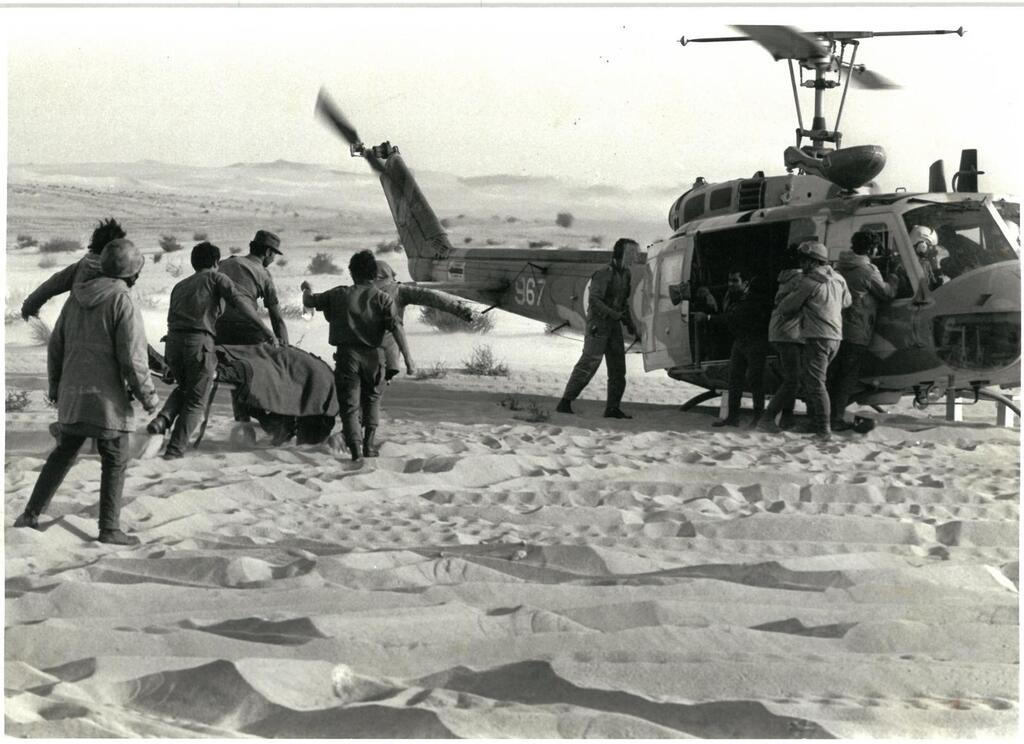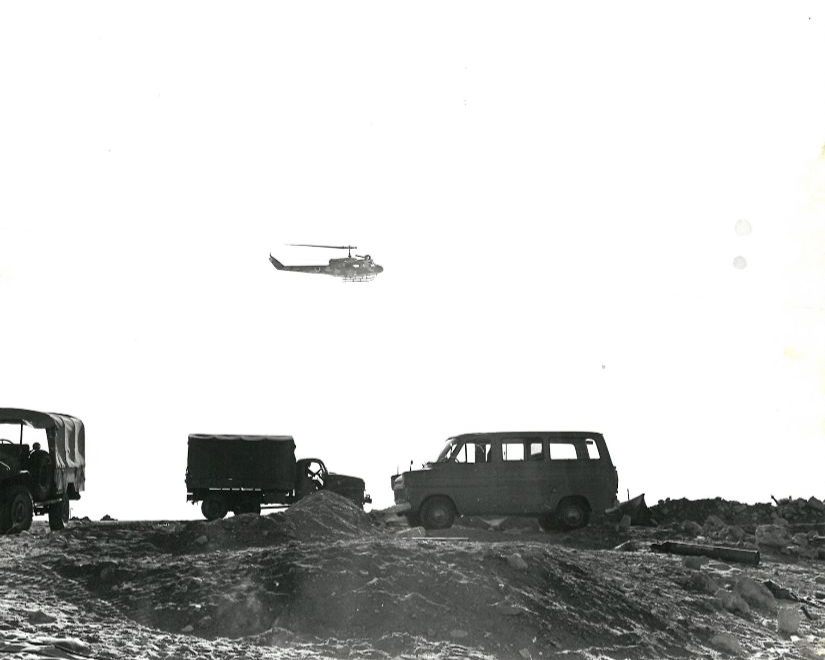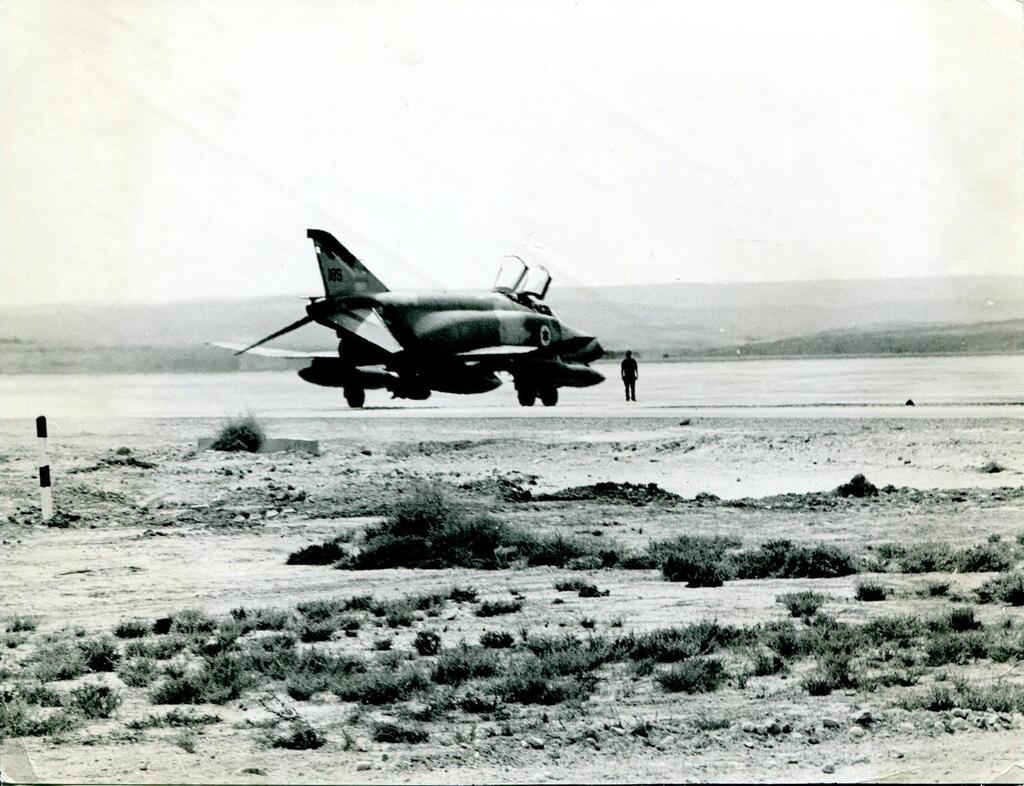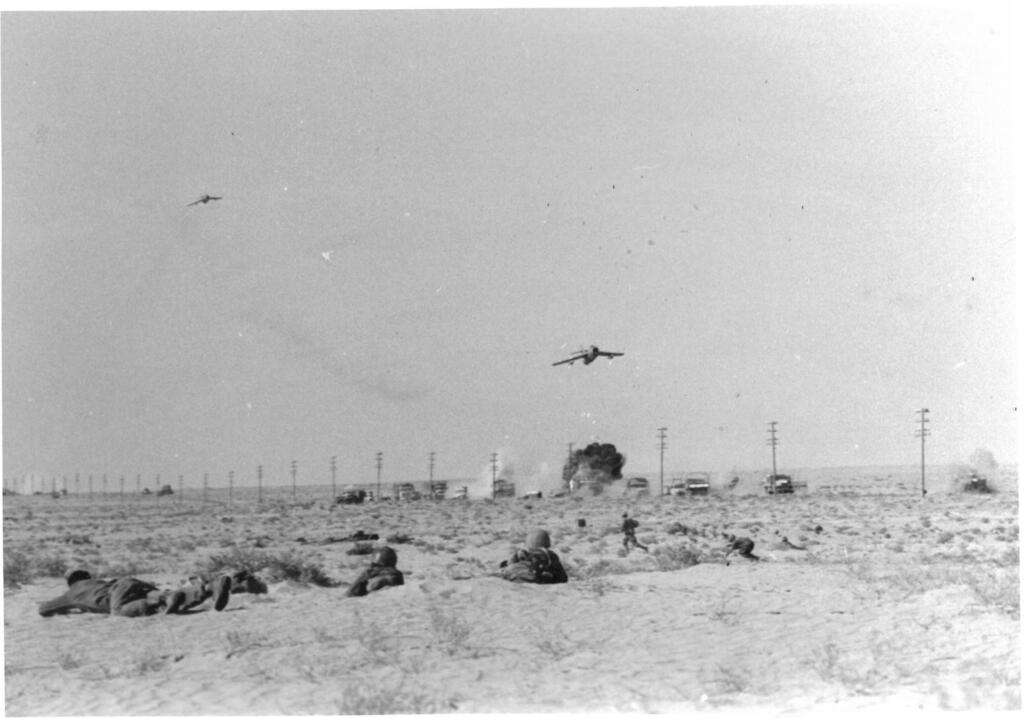Getting your Trinity Audio player ready...
On October 6, 1973, the day the Yom Kippur War broke out, Air Force Commander Major General Benny Peled clarified to his commanders that they must act with full force against the enemy.
Read more:
"The Air Force takes off for battle and rises in its entirety to thwart the enemy's aggression, to destroy it and shatter its dreams of breaching our border. Strike the enemy to ruins from the air and the ground," he wrote in a telegram he sent to them.
Fifty years after the war, the IDF reveals for the first time documents and records that illustrate what the commanders and soldiers of the air and naval forces went through during the war - and the tape of a conversation between IDF Chief of Staff Lieutenant General David (Dado) Elazar and Navy Commander Major General Benjamin (Bini) Telem during the Battle of Latakia.
The Yom Kippur War broke out with a surprise attack by Arab armies against Israel. The war took place on two main fronts - Sinai and the Golan Heights. Israel suffered physical and emotional losses - 2,689 fallen, thousands physically and emotionally wounded, and hundreds taken prisoner. "The cease-fire was violated," Peled wrote at the time.
7 View gallery
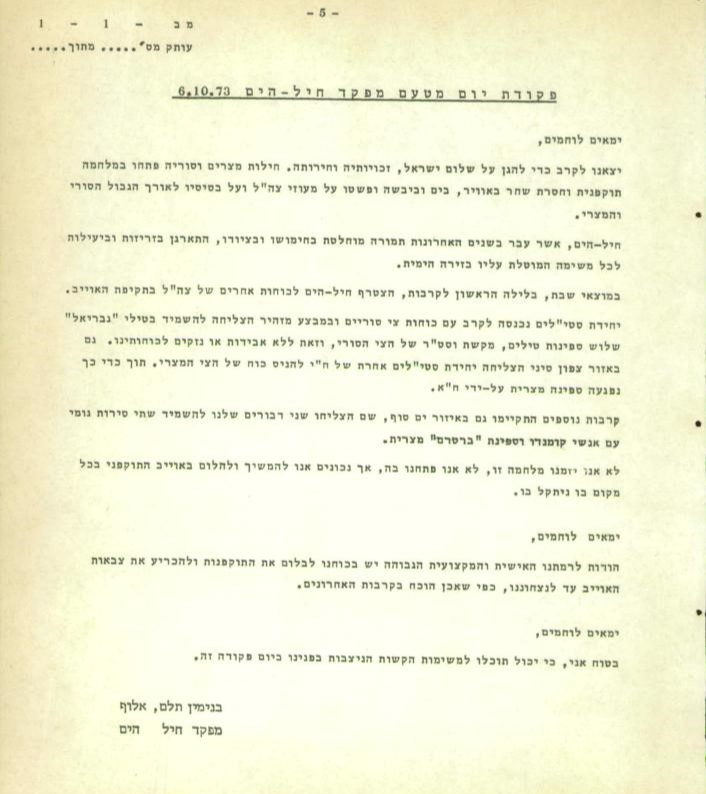

Telegram by Navy Commander Major General Benjamin Telem
(Photo: IDF Spokesperson's Unit)
"The Egyptian and Syrian enemy concentrated many forces along our border in the Golan Heights and the Suez Canal and wielded its militant arm against our state at the peak of the Yom Kippur prayers, with the goal of destroying our sovereignty. The long arm of the IDF is once again sent into the air. The State of Israel trusts in all of us that we will be worthy to proudly carry the supreme mission placed on each one of us."
In conclusion, he signed: "I wish all the warriors of the Air Force an easy fast and a peaceful and secure Shabbat."
Telem also sent a telegram to all the commanders of the force. "Fighting sailors, we went to battle to defend the peace of Israel, its rights and its freedom," he wrote in the message, which has now been published for the first time.
"The Egyptian and Syrian forces launched an aggressive and ruthless war in the air, at sea and on land, and invaded IDF strongholds and its bases along the Syrian and Egyptian borders.
“The Navy, which has undergone a significant transformation in its equipment and structure in recent years, has organized quickly and efficiently for any mission imposed upon it in the maritime arena. On Saturday night, the first night of battles, the Navy joined the other IDF forces in attacking the enemy."
Telem described in the telegram the harsh fighting against the enemy. "A missile boat unit entered into combat with elite forces and, in a daring operation, succeeded in destroying with Gabriel missiles three missile boats, a minelayer and a torpedo boat of the Syrian navy, all without losses or damages to our forces. Also, in the northern Sinai region, another missile boat unit managed to annihilate a force of the Egyptian navy. Meanwhile, an Egyptian ship was averted by the Air Force."
He added, "We did not initiate this war, we did not start it, but we are ready to continue and strike at the aggressive enemy wherever we encounter him."
To conclude, the Navy commander wrote to his men, "Fighting sailors, thanks to our high personal and professional level, we have the power to curb the aggression and defeat the enemy's armies until our victory, as indeed proven in the recent battles. I am confident that you will be able to handle the challenging tasks that stand before us on this day of command."
On that day the first-ever battle between ships using missiles took place - the Battle of Latakia, which ended in a decisive Israeli victory. Throughout this battle, all Syrian vessels involved were sunk - with no losses or damages to the Israeli Navy. Another pioneering aspect of the battle was the use of defensive and electronic warfare means to thwart the enemy's missiles strikes by the Israeli force. In doing so, the naval force became the first in the world to employ this domain in naval warfare.
After decades, the IDF released a recording of radio communications of IDF chief Dado that he held with the Navy commander during battle. "Commander, this is Benjamin. I request to inform the Operations Directorate that there is a naval commando battle near Latakia. We have two hits on two missiles and are preparing to fire at the tankers," said the Navy commander.
Dado responded to him calmly and humorously. "Benjamin, kudos to the Navy! This is an important contribution, and now finish off the tankers as well. Tell me, do the Syrians have any commandos?" The Navy commander replied: "I hope we finish them in a day or two."
At the end of the hard-fought battle, Ze'ev Almog summarized the Navy's activity in the war, writing that they had achieved success - but they must continue to prepare for the next battle.
"The naval commando units and naval sappers were prepared in both arenas for numerous missions, all united by their offensive nature and method of execution, involving deep penetration into enemy bases and daring and imaginative action. These lead to far-reaching results, which are entirely out of proportion considering the small number of troops."
He addressed the naval soldiers personally, writing, "There is no success or achievement in battle without soldiers, vessel crews and daring commanders. There is no success or achievement in battle without a dedicated and excellent rear team, working days and nights in the dockyard, equipment warehouses, workshops, planning offices and at headquarters.
“Ultimately, success tomorrow is not guaranteed if we rest on our laurels today. We must act vigorously in learning from past events and deriving lessons from our operations. Let's not repeat mistakes and mishaps - let's not revert to outdated combat tactics. Our success in tomorrow's battle depends on our preparation for it today."
At the end of the war, numerous lessons were drawn in the various IDF branches. The Air Force, for example, made many changes and adapted itself to improve in various areas.
In a highly confidential document written after the war summarizing the lessons, the many required changes were outlined at the organizational level, in infrastructure, in the required number and types of helicopters to be utilized, in the Air Force's defensive and offensive capabilities, in connection with ground forces and the command hierarchy, in the uncompromising need for intelligence and airfield security, and more.
These lessons were implemented by the Air Force in the First Lebanon War, which took place almost a decade later. "The lessons of the Yom Kippur War were implemented and addressed in the Air Force thoroughly and almost entirely," it was written.
"In the very few isolated cases where the lessons were not implemented, it was due to resource constraints and the desire to invest them where they would make the most significant contribution. The main lessons drawn regarding the build and operation of force remain relevant today and will remain relevant in the future. This is because the threat and the tasks of the Air Force, which stem from its very essence, remain and will remain in our eyes.
“Therefore, even in places where we have qualitatively elevated our airpower, we will need to continue and elevate it - since the threat against us has intensified."



